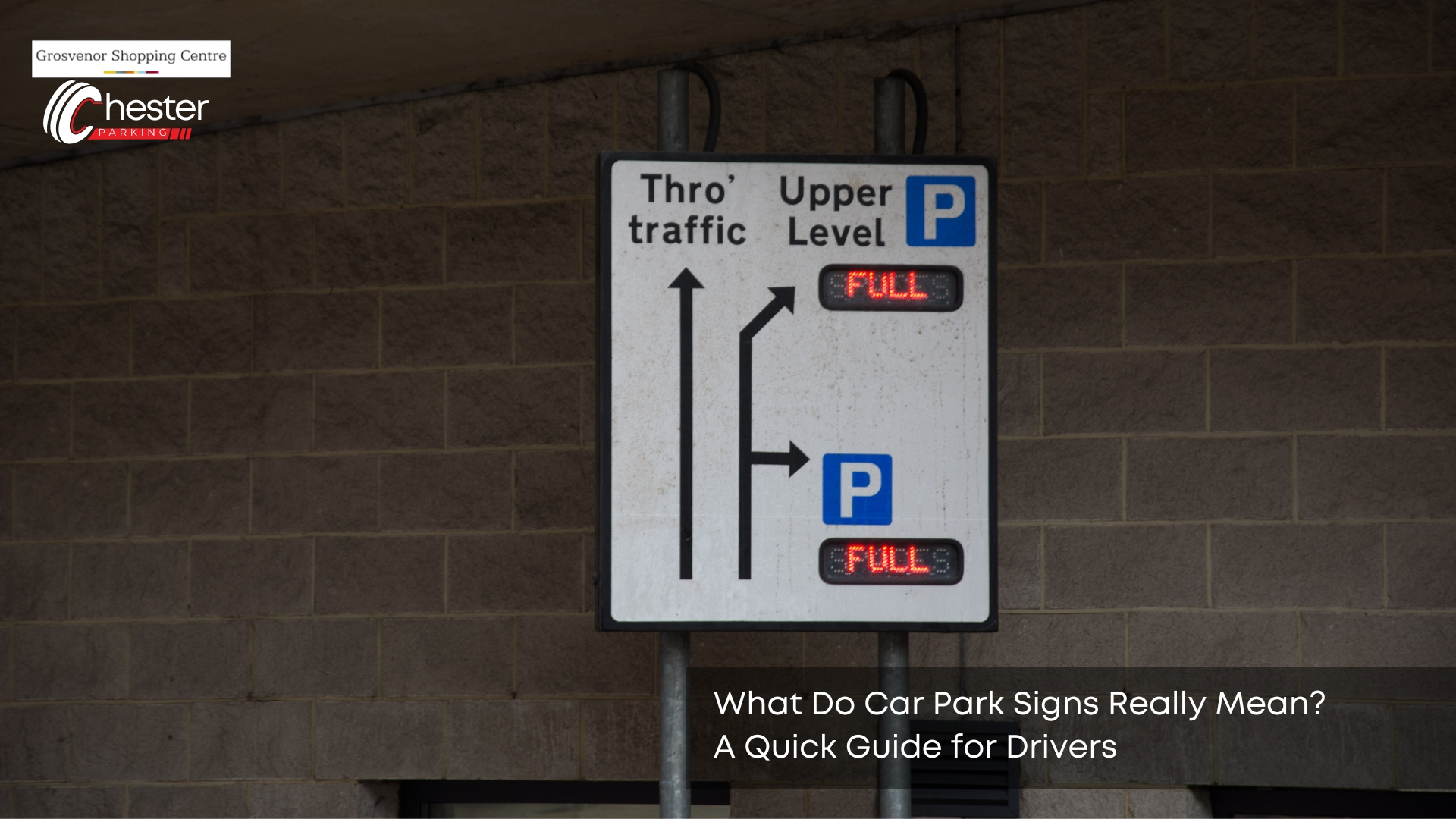Car park signs are easy to miss, but reading them correctly can save you from fines, confusion, and wasted time. Whether you’re parking on a busy high street, in a multi-storey car park, or outside a shop, signs tell you exactly where, when, and how you can park. Many drivers are unsure what different symbols or phrases mean. This quick guide explains the most common car park signs and how to follow them with confidence.
Why Is It Important to Understand Car Park Signs?
Understanding car park signs helps you avoid parking fines and makes your journey smoother. Signs provide details about parking time limits, who is permitted to park, and whether payment is required. Ignoring or misreading them could lead to a penalty or even towing in serious cases. It’s not just about following the rules – it’s about knowing what to expect before you leave your car. Once you know the basics, everything else becomes easier to spot.
What Do the Most Common Car Park Symbols Mean?
Most signs use simple icons, but their meanings are not always immediately clear. Here are a few to know:
- White P on a blue square – general parking allowed
- Crossed red lines or red circles – no parking or no stopping
- Clock symbol – time-limited parking with or without a disc
- P with a person in a wheelchair – Blue Badge disabled parking only
- ‘Pay at machine’ or mobile icons – payment required via cash or app
These symbols often appear with text to provide further explanation, so it is helpful to read the full sign.
What Does Dlet’sPermit Holders Only’ Mean?
You’ll Holders Only’ indicates that only drivers with a valid parking permit are permitted to use that space. This could be for residents, businesses, or specific users, such as council staff. If you park there without a displayed permit, you risk a fine. These zones are common in city centres and residential streets. Look out for additional information, such as time restrictions or nearby zone codes.
What Are the Rules Behind’ Pay and Display’ Signs?
‘Pay and Display’ signs instruct you Behind’ ase a tiDisplay’m a nearby machine and display it visibly on your dashboard. The sign will list the duration of your stay, payment hours, and any free periods. If you don’t display a valid ticket or stay too long, you may be asked to leave. Some areas now also allow app payments, so it’s always worth checking the full instructions to avoid citations.
How Should You Interpret Blue Badge Parking Signs?
Blue Badge signs indicate parking spaces reserved for drivers with a valid Blue Badge. These bays are often wider and close to entrances for easier access. You must display your Blue Badge clearly, usually with a clock showing your arrival time. Misuse of these spaces can result in fines or even the vehicle’s removal. Respecting these signs ensures fair access for those who need it most.
What Do Time Limits and Hour Restrictions Indicate?
Signs that display time limits or hours of enforcement indicate when parking rules are in effect. For example, “2 hours max, no return within 1 hour, Mon–Sat 8am–6pm” means” s you can park for up to two hours during those days “and times only. Outside of those hours, parking may be free. Reading both the time and day parts is key, especially near shops or schools.
Are Red Route and Clearway Signs Related to Car Parks?
Red Route and Clearway signs are not used in car parks, but they affect nearby roads. A Red Route means no stopping at any time unless signs show a loading or short-stop area. Clearways, shown by a red cross over a blue circle, mean no stopping on the verge or road during stated times. Knowing these helps you avoid parking where it’s not allowed, especially near car park entrances.
What happens If You Miss a Car Park Sign or Misread It?
If you miss a car park sign or misread it, you may receive a Penalty Charge Notice (PCN). Mistakes like overstaying, parking in the wrong zone, or failing to pay are common. Councils and private operators rely on signage to enforce their rules, so it’s your responsibility to check. A good habit is to pause for 10 seconds and scan the area before getting out of your car.
What Are Penalty Charge Notices, and Why Are They Issued?
Penalty Charge Notices are issued when a parking rule is broken. This might include not paying, overstaying, or parking without a valid permit. The notice will list the reason, location, and how to pay or appeal. Councils and private firms use different systems, so read it carefully. Avoiding PCNs starts with knowing the signs in the first place.
Do Private Car Parks Use Different Signs?
Yes, private car parks can use their signage but must follow the British Parking Association or IPC guidelines. Their signs will show the terms of use, charges, and enforcement process. These are commonly found in supermarkets, retail parks, and residential areas. The rules may differ from public streets, so always read them fully before leaving your car. To understand how enforcement works in more detail, read our post on private car park fines.
How Can You Spot the Rules in Supermarkets or Retail Car Parks?
Retail car parks often offer free parking for a set period, such as 90 minutes, but may charge after this time has elapsed. Signs will display the limit, enforcement methods (such as cameras), and payment details if required. If you plan to shop for longer, it’s worth checking if extra time can be purchased. Some plants use automatic number plate recognition, so overstaying may result in a fine being sent by post.
Are There Digital or App-Based Signs Drivers Should Know?
Yes, more car parks now include QR codes or app logos to guide you to digital payments. Look out for logos from RingGo, PayByPhone, JustPark, or YourParkingSpace. Some signs display live availability or instructions for contactless check-in. These are especially useful for those planning holiday parking in Chester or using unfamiliar locations. These systems are helpful but can confuse drivers unfamiliar with them, so a quick scan of the instructions makes a big difference.
Stay Up to Date with Changing Parking Rules
Parking rules and signs can change, especially with local council updates or the introduction of new technology. To stay informed, check council websites and driving forums or download local parking apps. Some navigation apps now warn users of restrictions in real time. For regular updates or help planning, the Parking Chester site offers a reliable local starting point. Staying aware helps you avoid fines and gives you more confidence when parking in new areas.


Leave a Reply